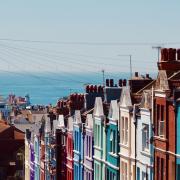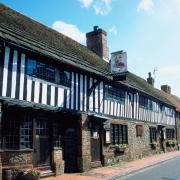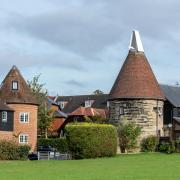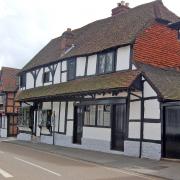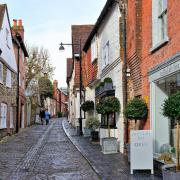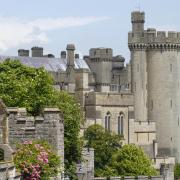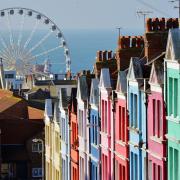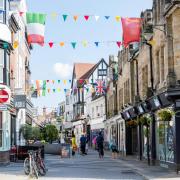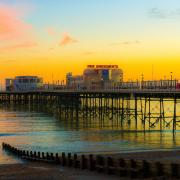Ideally situated for commuting to London and Brighton, this West Sussex town offers the perfect blend of rural and urban living
Getting there
Fantastic transport links make Haywards Heath a hot spot for commuters. Despite the glorious West Sussex countryside being just on its doorstep, London can be reached in less than two hours by car via the A23 and M25, while Brighton is about half-an-hour down the A272 and A23. Chichester is just over an hour away, and Gatwick airport is only 30 minutes up the road. The town’s railway station forms part of the Brighton main line and is served by regular direct trains to both London Victoria and London Blackfriars, getting you to the capital within an hour. Trains to Brighton are only 20 minutes, and run throughout the day. Despite these major towns being within easy reach, Haywards Heath’s positioning on the edge of the High Weald Area of Outstanding Natural Beauty means that country walks in rolling hills are also just a stone’s throw away.
History
Although the town is relatively modern as a settlement, its name has Old English origins with ‘Hayward’ roughly translating as an officer who protected hedged enclosures from wandering livestock. However, local legend has it that the town takes its name from Jack Hayward, a notorious highwayman who used to terrorise the community. Whether this tale is fact or fiction, a signpost depicting him stands proudly on Heath Road as a marker of the town’s history, the site where he is believed to have once roamed.
It has only recently been discovered that Haywards Heath also played a decisive role in the English Civil War. Part of the battle frontline boundary ran between Sussex and Hampshire, and in November 1642 local Parliamentarians came face to face with Royalist troops at Muster Green, a site which is now beautiful parkland. It was here that the Parliamentarians were victorious over the High Sheriff of Sussex, who had been advancing with Royalist troops from Chichester.
In 1598, Sir Stephen Borde built Borde Hill House, a stunning Elizabethan stately home that forms part of a 2,300 acre estate, lying mostly in the High Weald Area of Outstanding Natural Beauty. It sits on the outskirts of Haywards Heath and today the spectacular gardens are open to the public, featuring exotic and rare trees that were collected from all corners of the world in the early 1900s.
However, it wasn’t until the advent of the London to Brighton railway in 1841 that the town was officially put on the map. The people of Cuckfield had opposed the train-line running through their parish, so a railway station opened in Haywards Heath in July 1841 as an alternative. This then kick-started the area’s rapid expansion, soon outgrowing Cuckfield, which it had originally formed part of. The Sussex County Lunatic Asylum was opened here in 1859, which is now the Princess Royal Hospital, and in December 1894 Haywards Heath was officially formed as an independent settlement under the Local Government Act.
The early 20th century saw a significant increase in housing; in the 1920s a scheme was drawn up to provide accommodation for families on low incomes, culminating in the building of Franklands Village in the 1930s, which has since developed into its own community. By 2001 Haywards Heath was home to 22,800 people, which had climbed to 27,057 by the 2011 census.
Annual festivals and events
Haywards Heath’s strong sense of community is celebrated every September with their Town Day, which involves a village-style fete being held in Victoria Park. The event is organised by the Town Council, and features traditional favourites such as a Punch and Judy show, as well as falconry displays, arts and crafts stalls and even a climbing wall. May sees an annual Spring Festival take place on Muster Green, also organised by the Town Council. At this year’s celebration there were more than 50 stalls as well as 60 local charities, all helping to raise money for fantastic causes.
Muster Green is also the site of a Remembrance Day commemoration service every November, with the local community coming together at the War Memorial.
The Greater Haywards Heath Bike Ride also takes place every April, with routes of varying length wending through the glorious Sussex countryside that this town has on its doorstep.
Amenities
Running through the middle of the town is South Road, a bustling area that forms the main shopping district. Here there are a number of high street shops such as a Boots, a WH Smith and a Waterstones, as well as the Orchards Shopping Centre, which makes Haywards Heath a haven for fashion lovers. This town will spoil you for choice with places to eat, with there being a wealth of both chain and independent restaurants. There are also plenty of pubs to choose from, as well as many good family run cafés. The Broadway district of Haywards Heath is renowned for its buzzing nightlife with an eclectic selection of popular bars, and Clair Hall hosts a variety of events throughout the year including live music and stand up comedy.
A selection of supermarkets means that you won’t have to go far afield for your food shop, including a brand new Waitrose conveniently situated next to the station. There are also numerous hairdressers, barbers, banks and pharmacies, plus three doctors surgeries and churches of varying denominations. Haywards Heath Golf Club sits on the outskirts of the town, offering a 19-hole course set in stunning countryside.
Meet the neighbours
A move to Haywards Heath would have you following in famous footsteps. The television presenter Richard Osman grew up here, attending Warden Park School. He now makes a regular appearance on our screens as a presenter of the BBC’s Pointless. The singer-songwriter Natasha Bedingfield was also born in Haywards Heath, releasing her debut album Unwritten in 2004, which has since gone on to sell more than 2.3m copies.
Council
Haywards Heath Town Council comprises of 16 members; together they represent the five wards of the town, Ashenground, Bentswood, Franklands, Heath and Lucastes and Bolnore. The current town mayor for the municipal year is Jim Knight. Haywards Heath comes under Mid Sussex District Council, based in Oaklands Road, and West Sussex County Council. The area is represented in the Houses of Parliament by Sir Nicholas Soames of the Conservative party, who has been a Member of Parliament for Mid Sussex since 1997. In 2017 he retained his seat with 56.9 per cent of the vote.
More…
• What it's like to live in Battle - A rich local history, thriving annual festivals and a bounty of amenities make this East Sussex town hard to top




